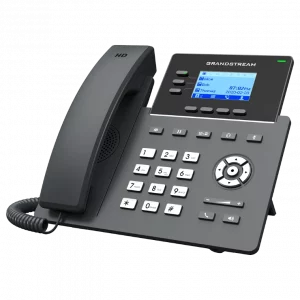
The Language of SIP Trunking
 As often happens with specialized professions or industries, an entire language has evolved for telecommunications. This is great when people who spend their days thinking about networks and protocols talk to each other, but very confusing for people who just want to know what communications solution is right for their business. We thought it would be helpful to pull together some terms and acronyms that are commonly used when discussing SIP trunking. This list is nowhere near exhaustive, but it may help you understand some of the jargon you’ll undoubtedly run into.
As often happens with specialized professions or industries, an entire language has evolved for telecommunications. This is great when people who spend their days thinking about networks and protocols talk to each other, but very confusing for people who just want to know what communications solution is right for their business. We thought it would be helpful to pull together some terms and acronyms that are commonly used when discussing SIP trunking. This list is nowhere near exhaustive, but it may help you understand some of the jargon you’ll undoubtedly run into.
ATA (Analog Telephone Adaptor)- An ATA is a device that connects conventional telephones, PBX systems, fax machines and similar hardware to a digital telephone system or internet-based telephony network. An ATA can be used to connect older devices to a SIP trunking solution.
E911 – E911 is short for Enhanced 911. It is used for providing emergency service on cellular and internet voice calls, including those made over SIP trunks. ‘Nomadic’ e911 service lets customers set any physical address in the United States as the address to be transmitted on 911 calls. This ensures that calls to 911 are routed to the closest Public Safety Answering Point. That address also appears on the emergency services operator’s screen when the call is placed.
IP (Internet Protocol) – IP defines the way data is moved between the destination and the source. It is the network layer protocol in the TCP/IP communications protocol suite. Telecommunications hardware that is designed for use over the internet is commonly called “IP enabled.” IP enabled phones may be referred to as “SIP Phones” or “VoIP Phones.”
Jitter – It is used to describe a short fluctuation in the transmission signal. In SIP trunking, it may result from an abrupt variation in signal characteristics, such when a data packet arrives either ahead or behind a standard clock cycle.
Latency – Latency is the time between the moment a voice packet is transmitted and the moment it reaches its destination. This delay may be in nanoseconds but it is still used to judge the efficiency of networks. Too much latency in SIP trunking can lead to poor quality calls.
PBX (Private Branch Exchange) – A PBX is the hardware and software that comprise a business telephone system. The internet enabled PBX technology is called IP PBX (Internet Protocol Private Branch Exchange).
POTS (Plain Old Telephone Service) – A single phone line and a single phone number. Home phones and dedicated fax lines are good examples of POTS.
PRI (Primary Rate Interface) – PRI is a physical connection to the PSTN over a dedicated line that only serves voice transmission. Traditional business telephone systems leverage PRI. SIP is an alternative to PRI.
PSTN (Public Switched Telephone Network) – The PSTN is the combination of local, long-distance, and international carriers that make up the worldwide telephone network.
QoS (Quality of Service) – QoS is a router setting that prioritizes voice traffic over data traffic. This improves the quality of SIP calls.
SIP (Session Initiation Protocol) – Session Initiation Protocol (SIP) is communications protocol used for conducting multi-media communication like voice and video calls using Internet networks. It controls messages that are sent between various devices on the network and manages establishment, termination and other elements of the call.
SIP Channel – A SIP channel represents one connection to the PSTN. SIP trunks can have an unlimited number of channels, with each channel handling one concurrent telephone call.
VoIP (Voice over IP) – Voice over Internet Protocol (VoIP) is a group of technologies that work to deliver voice and other multimedia sessions over Internet Protocol (IP) networks, most commonly the Internet. SIP trunking is one method of achieving VoIP, others include the public internet and private point-to-point networks.
We hope that this quick introduction to some of the most commonly used SIP related terms is helpful. Please let us know if there are any you would like us to explore in more depth.


